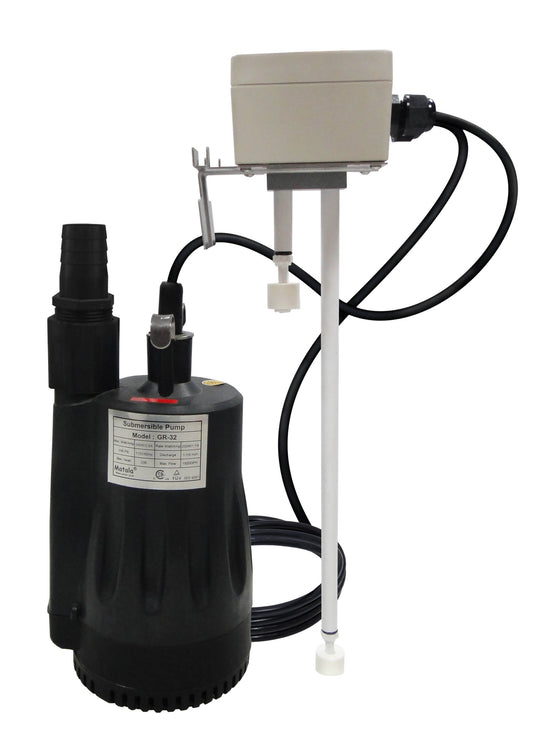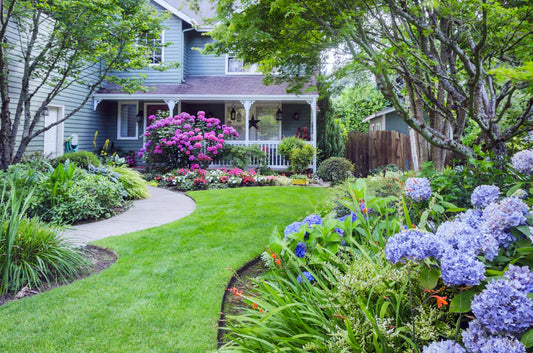
Can You Use a Grey Water System in Freezing Climates?
Sam WilhoitShort Answer:
Yes — greywater systems can work reliably in freezing climates with proper insulation, subsurface piping, and cold-weather design. Whether you live off-grid or manage a home with septic limitations, winter-ready greywater setups like the Aqua2use system help reuse water safely and efficiently, even below freezing.
How Greywater Systems Work in Cold Climates
In cold or snowy regions, greywater (from showers, laundry, or sinks) can freeze in pipes or tanks if systems aren't properly designed. The key to successful winter greywater reuse lies in:
- Buried piping below frost line
- Insulated tanks and filters
- Draining or bypassing during deep freezes
- Avoiding exposed hoses or open-surface discharge
According to Greywater Action, systems in freezing climates often use mulch basins, subsurface drip lines, or constructed wetlands insulated with straw or leaf mulch for year-round function (source).
Real-World Examples: Off-Grid and Cold-Weather Solutions
On Reddit’s off-grid forum, one cabin owner in Canada explained how they use a drain field with insulated lines and gravity-fed discharge to avoid freezing in -30°C temps. Others use graywater barrels emptied daily or diverters like Aqua2use GWDD to direct water to protected subsurface zones (Reddit discussion).
Another user of the Aqua2use GWDD mentioned running greywater into a reed bed system buried underground, which stays functional in most months—even in frosty conditions. Their system included a check valve, gravel-filled PVC pipes, and regular filter maintenance.
How to Design a Greywater System for Freezing Conditions
1. Use Subsurface Drainage
Install drip irrigation lines or mulch basins at least 12"–18" deep, below frost level. Surround emitters with gravel to reduce freezing risk.
2. Insulate and Protect Key Components
Protect tanks, valves, and pumps with insulated enclosures. For systems like Aqua2use Pro, bury or cover the tank if possible, and use heat tape on exposed lines.
3. Slope and Drain Lines
Avoid stagnant water. Sloped pipes that drain after each use are less likely to freeze.
4. Consider Seasonal Bypass Options
In extreme climates, install a diverter to route greywater into the sewer or septic during peak winter, and switch back in spring.
5. Use Cold-Climate Compatible Products
Choose systems with rugged, enclosed pumps and filter housings. The Aqua2use GWDD and Pro units have UV-stable casings, weather-tolerant materials, and can be configured for buried installs.
Why Aqua2use Systems Are Ideal for Cold Climates
- Flexible Installation: Above ground, half-submerged, or underground
- 4-Stage Filtration: Reduces clogging risks during winter irrigation
- Compact & Enclosed: Keeps components shielded from cold exposure
- Proven Performance: Users report success across seasons with minimal maintenance
Many tiny home and cabin owners also highlight the Aqua2use system’s reliability when integrated into rural septic and irrigation designs — even when using creek water or off-grid laundry setups.
FAQ: Grey Water Systems in Cold Climates
Can greywater pipes freeze in winter?
Yes, if left uninsulated or above ground. Bury pipes below the frost line and drain after use to prevent freezing.
How do you winterize a greywater system?
Flush lines, insulate tanks and valves, and use diverters to temporarily reroute water during deep freezes.
Is Aqua2use safe for use in snow zones?
Yes. With proper installation, Aqua2use systems can be used year-round. Enclose or bury the unit and use sloped, gravel-lined discharge lines.
Can you use greywater in a septic setup in winter?
Yes, especially with systems like Aqua2use that allow dual routing — some water can go to septic, some to irrigated beds depending on weather.
Do greywater filters freeze?
Not if installed indoors or in an insulated cabinet. Aqua2use filters are designed for minimal maintenance and can be cleaned seasonally.
Learn More or Get a Winter-Ready Greywater System
Ready to reduce your water bill — even in the snow? Aqua2use greywater systems are built to perform in extreme climates. Visit WaterWiseGroup.com to explore options, or contact a local installer for a cold-climate consultation.







